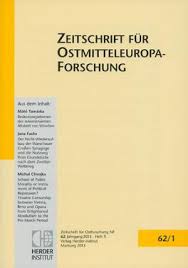Sprachenpolitik, Sprachendynamik und imperiale Herrschaft in der Habsburgermonarchie 1740-1914
Language policy, dynamics of language and imperial rule in the Habsburg monarchy, 1740-1914
Author(s): Peter HaslingerSubject(s): Language and Literature Studies, Government/Political systems, 18th Century, 19th Century, Pre-WW I & WW I (1900 -1919)
Published by: Verlag Herder-Institut
Keywords: Language policy; dynamics of language; imperial rule; Habsburg monarchy; 1740-1914;
Summary/Abstract: Between 1740 and 1914, the language policy of the Habsburg rulers was determined by two factors: by the stress on German as the unifying language within the State bureaucracy on the one hand and by Steps taken towards the emancipation of other languages, combined with aspects of a divide et impera-policy, on the other. As the present article tries to argue, these two elements were not contradictory but rather co-existent, being part of a common political setting to secure imperial rule and to guarantee the stability of the complex of the various crown lands. Accordingly, the Habsburg language policy was not designed to serve the purpose of discriminating against specific ethno-linguistic groups. It rather aimed at keeping a delicate balance of advancement, tolerance, symbolic recognition as well as a minimum amount of plurality and a functional hierarchy between the various languages that had been recognized. Within this context, the reforms of Maria Theresia and Joseph II. formed a point of reference for all the national movements arising within the Habsburg monarchy. From their point of view, the Habsburg language policy was halfhearted and unpredictable, getting in the way of national emancipation (this also applied to the Hungarian language, which had become recognized in imperial representation after 1867). The rivalry for direct influence on administrative and legal language Standards had the effect that the Habsburg dynastic concept, which was based on the recognition of more than one language, became more and more marginalized in public discourse towards the end of the 19* Century. All in all, however, the Habsburg language policy cannot be interpreted as being benevolent or flexible towards the Single national communities. It rather aimed at the Integration of national - and other - political forces into the political System of Habsburg rule.
Journal: Zeitschrift für Ostmitteleuropa-Forschung
- Issue Year: 57/2008
- Issue No: 1
- Page Range: 81-111
- Page Count: 31
- Language: German

